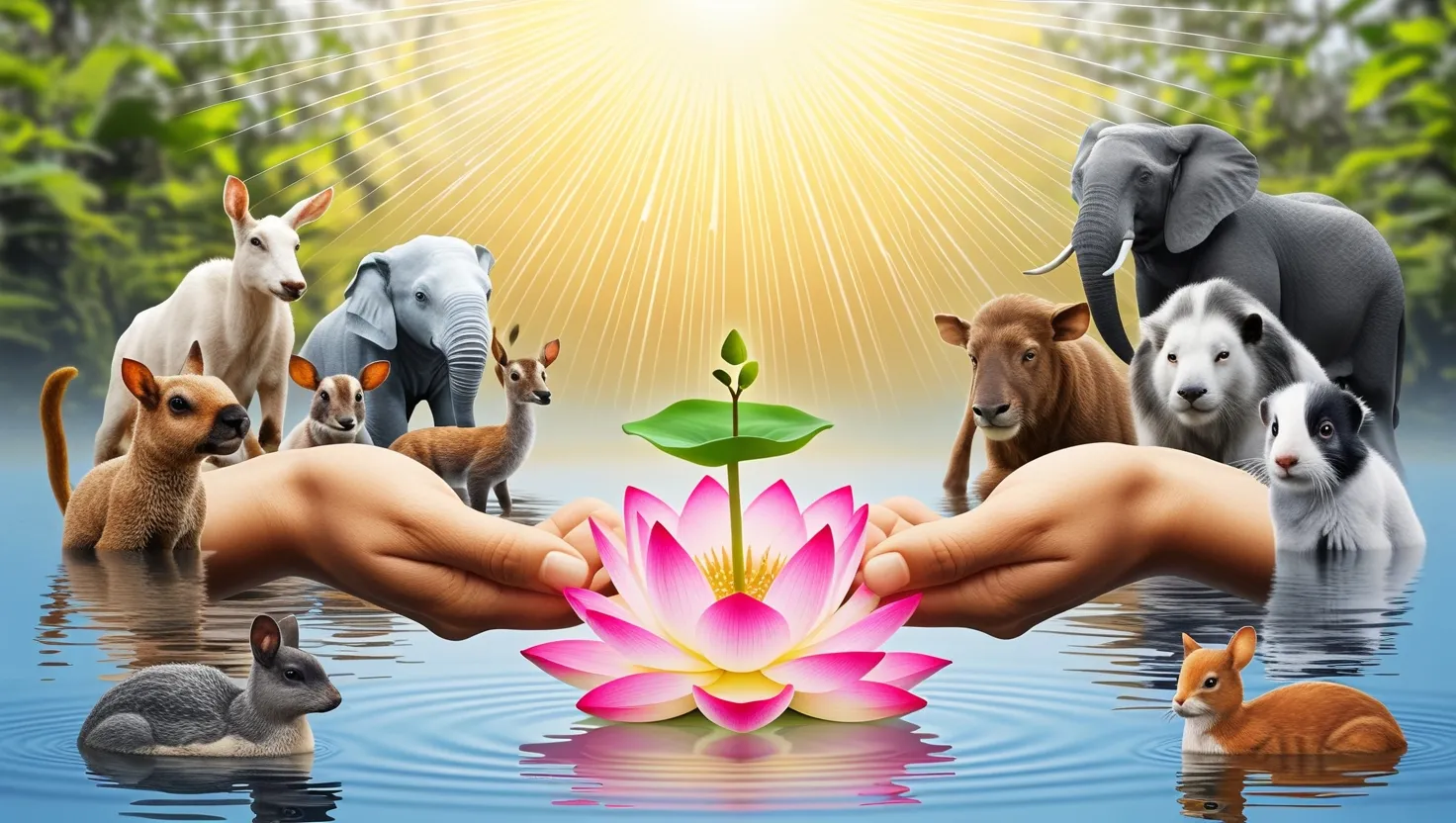The Concept of Moksha: Hindu Philosophy’s Ultimate Goal of Liberation
Freedom from the endless cycle of birth and death stands as the pinnacle achievement in Hindu philosophy. This freedom, known as moksha, represents the ultimate goal that guides spiritual seekers through their journey of existence. I often find that people misunderstand moksha as simply an afterlife concept, but it’s far more profound—it’s about complete spiritual freedom that transcends our ordinary understanding of existence.
Moksha derives from the Sanskrit root “muc,” meaning “to release” or “to free,” combined with the suffix “sha” indicating a state or condition[3][5]. This liberation isn’t just about escaping something negative; it’s about achieving our highest potential as conscious beings. Have you ever wondered what complete freedom would truly feel like—not just freedom from external constraints, but from the limitations of your own mind?
The concept emerges from ancient Indian wisdom traditions that recognized a fundamental human problem: we remain trapped in samsara, the continuous cycle of birth, death, and rebirth. This cycle continues indefinitely, driven by our karma (actions) and our attachments to worldly experiences[4]. Unlike temporary pleasures or achievements that fade with time, moksha represents permanent release from all forms of suffering and limitation.
“The little space within the heart is as great as the vast universe. The heavens and the earth are there, and the sun and the moon and the stars. Fire and lightning and winds are there, and all that now is and all that is not.” — Chandogya Upanishad
The path to moksha isn’t singular but diverse, accommodating different temperaments and capacities. Hindu philosophy outlines four main approaches, each suited to different personality types. Jnana yoga pursues liberation through knowledge and self-inquiry, peeling away layers of ignorance to reveal our true nature[3]. Bhakti yoga emphasizes devotion and surrender to the divine, transforming our emotional energies into spiritual connection. Karma yoga focuses on selfless action without attachment to results, purifying our motivations through service. Raja yoga employs meditation and mental discipline to transcend ordinary consciousness.
What makes these paths remarkable is their practicality. Each offers concrete methods rather than just theoretical concepts. These aren’t just philosophical ideas but lived traditions with specific practices that have been refined over thousands of years.
Different philosophical schools within Hinduism offer varying perspectives on the nature of moksha. Advaita Vedanta, one of the most influential, describes it as realizing one’s identity with Brahman—the absolute reality beyond all forms and limitations[5]. This isn’t merely an intellectual understanding but a direct experience that transforms one’s entire being.
What happens when we achieve moksha? According to traditional understanding, the liberated soul is freed from the necessity of rebirth. The karmic impressions that normally propel us into new incarnations are dissolved, and we experience our true nature as pure consciousness. Some traditions describe this as a merging with universal consciousness, while others maintain that liberation preserves individual identity in relationship with the divine[2].
“As rivers flowing into the ocean find their final peace, their name and form disappeared, even so, the wise become free from name and form, attaining the Supreme Divine Person.” — Mundaka Upanishad
The achievement of moksha typically requires multiple lifetimes of spiritual practice. The journey involves progressively refining our consciousness through discipline and insight. However, Hindu texts also describe rare individuals who attain liberation within a single lifetime through intense dedication or divine grace. These liberated beings, called jivanmuktas, continue living while completely free from ordinary human limitations. They act in the world but remain inwardly detached, serving as living examples of spiritual fulfillment.
What would you recognize in someone who has achieved moksha? Traditional texts describe qualities like perfect equanimity, freedom from fear, spontaneous compassion, and natural wisdom that arises not from learning but from direct perception of reality.
Modern interpretations of moksha emphasize its psychological and philosophical dimensions. Beyond its religious significance, the concept offers insights into overcoming mental conditioning, transcending ego-identification, and finding meaning beyond material success. In a world often dominated by consumerism and external achievement, moksha reminds us that true fulfillment comes from inner transformation rather than outer acquisition.
The pursuit of moksha involves a profound shift in how we relate to experience. Rather than constantly seeking pleasure and avoiding pain—the default pattern of human behavior—we learn to witness all experiences with equanimity. This doesn’t mean becoming passive or indifferent, but developing a deeper relationship with life that isn’t driven by craving and aversion.
Have you noticed how much of our suffering comes from resistance to what is? The path to moksha involves gradually releasing this resistance, not through suppression but through clear seeing. When we recognize the impermanent nature of all phenomena, including our own bodies and minds, attachment naturally loosens.
Hindu philosophy places moksha within a framework of four aims of human life: dharma (righteous living), artha (prosperity), kama (pleasure), and moksha (liberation)[5]. While the first three address our worldly needs and aspirations, moksha represents the transcendent dimension that gives ultimate meaning to human existence. This balanced approach acknowledges both our material and spiritual dimensions.
“The self is one. Unmoving, it moves faster than the mind. The senses lag, but self runs ahead. Standing still, it overtakes all that run. Without the self, there never would have been any breath of life.” — Isa Upanishad
Contemporary practitioners adapt traditional practices to pursue liberation within modern contexts. Meditation, self-inquiry, devotional practices, and selfless service remain central, but their forms evolve to address current realities. The essential principles remain timeless: turning attention inward, recognizing the nature of consciousness, and cultivating freedom from limiting patterns.
What makes moksha particularly relevant today is its response to universal human concerns about purpose, suffering, and fulfillment. In a world often characterized by fragmentation and alienation, moksha offers a vision of wholeness and connection. It reminds us that beneath our apparent separateness lies a deeper unity that can be directly experienced.
The journey toward moksha isn’t about escaping the world but seeing it more clearly. As our perception purifies, we recognize that what we’ve been seeking in external objects and experiences has always been present in consciousness itself. This recognition doesn’t diminish our engagement with life but transforms its quality, infusing our actions with greater awareness and compassion.
Modern science, particularly in the fields of neuroscience and psychology, has begun to explore states of consciousness that resemble traditional descriptions of moksha. Research on advanced meditators reveals distinctive neural patterns associated with experiences of selflessness, boundlessness, and non-dual awareness. While the scientific and spiritual vocabularies differ, they point toward similar dimensions of human potential.
How might your life change if you oriented it toward moksha? This doesn’t necessarily mean abandoning worldly responsibilities—the tradition of karma yoga specifically addresses liberation through engagement with the world. Rather, it means bringing a different quality of awareness to everything you do, recognizing each moment as an opportunity for spiritual growth.
The relevance of moksha extends beyond Hindu traditions to inspire spiritual seekers across cultures. Its emphasis on direct experience rather than dogma allows it to transcend cultural boundaries. The core insight—that freedom comes through transforming consciousness rather than external circumstances—resonates with contemplative traditions worldwide.
In the end, moksha represents the highest possibility of human existence: complete freedom from limitation and suffering, not as an escape from life but as its fulfillment. It reminds us that beneath all our seeking for happiness in external things lies a deeper longing for the infinite that is our true nature. The journey toward this realization may be the most profound adventure possible in a human lifetime.






